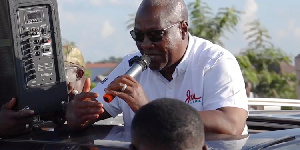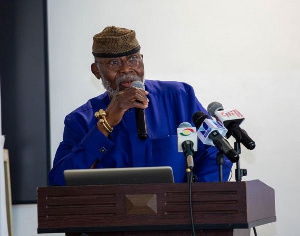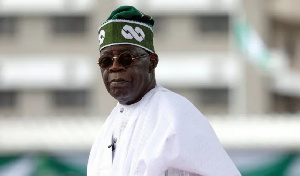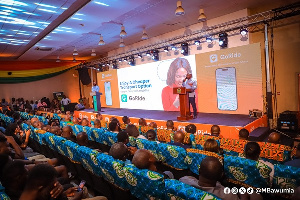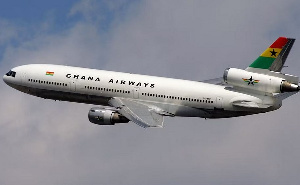 Ghana Airways collapsed in 2004
Ghana Airways collapsed in 2004
In 1958, Ghana Airways burst unto the scene to serve as the national carrier of Ghana. The airliner was a joint venture between the government of Ghana, who held a 60 percent stake, and the British Overseas Aircraft Corporation (BOAC), holding the rest of the 40 percent.
It operated from its primary hub at the Kotoka International Airport.
According to simpleflying.com,
Read full article.Ghana Airways was under a seven-year agreement with BOAC staff first operating the airline, while some Ghanaian personnel were sent to London for training.
Through the years, Ghana Airways flew the flag of Ghana on its wings and anyone who was associated with this flying experience was deemed to be elite and often beamed with some pride.
Ghana Airways used two Boeing 707-420s and three Vickers VC10s to commence flights to the United States, along with services to Sydney in Australia and Tokyo in Japan.
But the business side of things began to signal alarm bells, resulting in the subsequent collapse of Ghana Airways, due to several reasons.
In the early 2000s, the financial problems of Ghana Airways became evident while demands for flying increased, and the staff strength of the airline became huge. The airliner also found it difficult to compete with other private carriers who were deploying innovative ways to operate.
GhanaWeb Business takes a look into major reasons for which Ghana Airways did not live up to its expectation.
Management and operational woes
After successfully operating for a few years, Ghana Airways decided to distance itself to become an independent entity by reaching an agreement with BOAC to buy out the 40 percent stake in the airline.
Although the move was laudable, the management of the company were now faced with stiff competition from private airlines, which began to provide more pristine services as compared to Ghana Airways.
Former Chief Executive Officer of BOAC, Sir Duncan Cumming, when presented with a check for the agreement, simultaneously signed a contract renewing BOAC's management agreement which was first signed in 1958.
This agreement was said to be in place until July 1961 after the government of Ghana announced that it was reorganizing the airline and canceled Ghana Airways' commitment for the two Boeing 707s aircraft it used for operations under the BOAC management.
But some three years before the contract was due to expire, Ghana Airways management were said to have terminated its pool agreement with BOAC and rather signed a new agreement with Alitalia to co-operate on flights between Accra and Rome.
This, however, did not sit well with BOAC, resulting in frosty working-relations between the UK carrier and Ghana Airways, although the British company remained the handler of Ghana Airways’ ground operations at London’s Heathrow Airport.
Ghana Airways’ debt situation
According to simpleflying.com, Ghana Airways over the years became heavily-saddled with debt, amounting to about $160 million with its former Chairman, Sir Sam Jonah, indicating that the company would not survive without a foreign partner.
Before its collapse in 2004, Ghana Airways in the year 2000 was able to offer flights between Accra and Baltimore, Maryland, and the following year, it decided to operate flights via transit in Banjul in The Gambia, as part of efforts to increase its reach and meet demand.
But the strategy failed when passengers in Banjul threatened to burn down the Ghana Airways’ office after a full flight in January 2002 landed in Banjul from Accra, took on fuel, and then departed for Baltimore, leaving Gambian passengers hoping to fly to Baltimore stranded at the airport.
In that same year, Ghana Airways saw one of its DC-10s airlines seized at London’s Heathrow airport after the British creditor, BOAC, got a legal junction to recoup some of the £4 million that it was owed.
The British creditor, however, released the DC-10s airliner after receiving a debt payment of $1 million, a mere figure of Ghana Airways’ debt obligation owed to the UK company.
In September 2002, the imminent collapse of Ghana Airways was almost an open secret after the government of Ghana announced that it had entered into an agreement with South Africa's Nationwide Airlines, adding that Ghana Airways would now be renamed Ghana Nationwide International Airlines (GNIA).
While this agreement and relationship with the South Africa firm did not last for even a year, the government of Ghana in 2003 said it had withdrawn from the deal with GNIA, and was now involved with another company named British Midland.
Under this new deal, Fly Ghana Limited was named as the main shareholder of the government. It was expected to operate for short period under a separate entity to Ghana Airways prior to the two parties forming the new Ghana Airways franchise.
Under this plan, British Midland was to supply two Airbus A330s for the Accra-London and Accra-New York routes, with the DC-10s being used on other international long-haul routes while the new Ghana Airways would operate regional flights on the Fokker 100s airline fleet.
Finally, in 2004, the inevitable occurred after the new Ghana Airways was discovered to have been operating under the pretext of an unsafe aircraft on an out-of-date license.
This resulted in the United States Department of Transportation banning the airline thereby forcing it to cancel its New York and Baltimore flights.
The ban imposed on Ghana Airways however led its entire Board being fired by the government of Ghana with the state assuming full control of the airline which was still left with more outstanding debt and operational woes.
As part of efforts to revamp the airline, Ethiopian Airlines had offered to help keep Ghana Airways afloat but proposed a deal that would see government get a 25 percent stake in the airline.
The government of Ghana subsequently refused the proposal, leaving the airline to be liquidated in the middle of June 2005.
MA/FNOQ



